All sizzle, no steak: Cultivated meat has turned out to be a Silicon Valley flop, here’s why
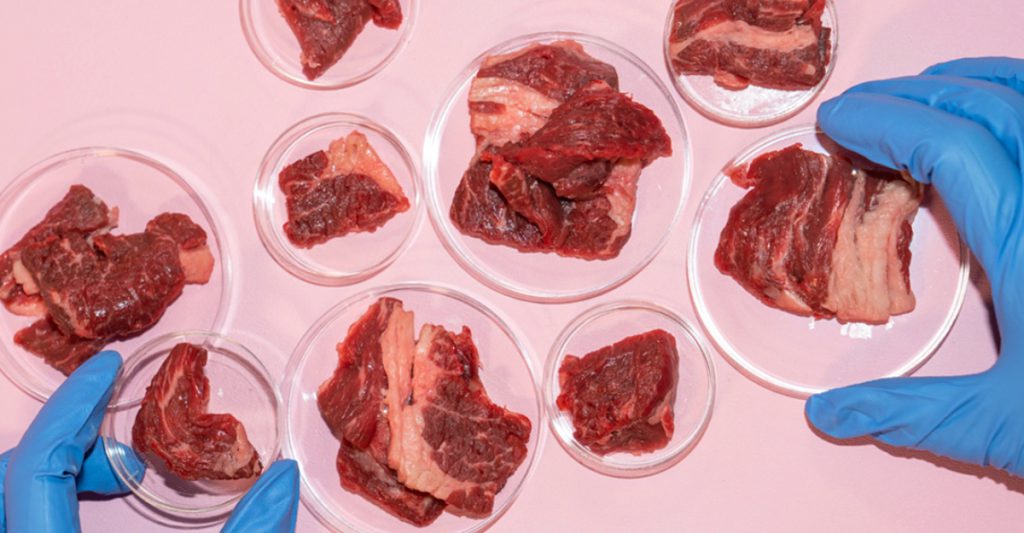
Back in the early 2000s, NASA-funded scientists conducted an investigation into alternative protein sources to offer astronauts more palatable options on long space journeys.
The result? Lab-grown goldfish meat that “looked and smelled” exactly like fish.
The scientists didn’t go as far as tasting it, though. The cultivated meat hadn’t yet been certified as safe to eat, and concerns lingered about potential infectious agents from the foetal bovine serum used to grow it.
Fast forward to 2013, the cultivated meat industry saw another breakthrough after years of research when Dutch scientist Mark Post announced he had created the world’s first cultivated beef burger. The cultivated patty, which was painstakingly grown strand by strand in hundreds of plastic dishes, took two years to develop and cost a whopping US$332,000.
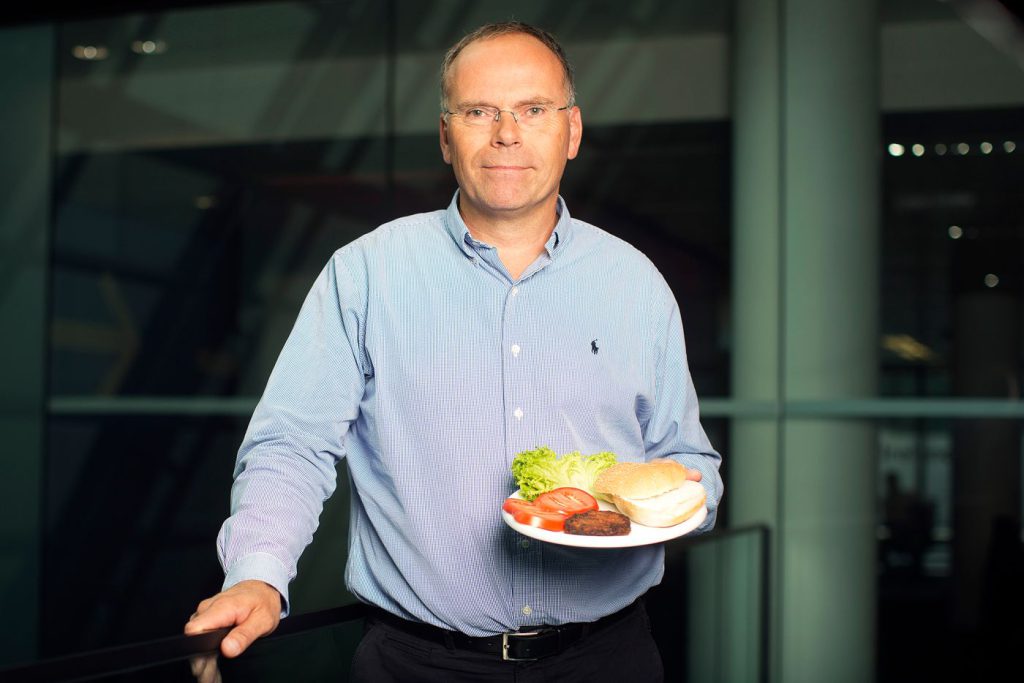
This breakthrough sparked a wave of enthusiasm in the sector: startups emerged, making bold proclamations and laying out aggressive product timelines. Investors too, fuelled by the promise and potential of this new innovation, poured millions of dollars into cultivated meat ventures.
In 2021, investment in cultivated meat companies topped US$1.36 billion, growing by over 300 per cent from the previous year. Among these companies is Californian firm Eat Just, one of the top funded startups in the industry, having raised around US$850 million since its founding in 2011.
Eat Just was also the first company in the world to gain approval to sell its lab-grown chicken nuggets to consumers in Singapore three years ago to much fanfare.
But despite cinching regulatory approval and having millions of dollars poured into the industry, lab-grown meat has yet to make its way onto grocery store shelves.
For years, companies have promised that commercially-viable lab-grown meat was right around the corner, however, repeated missed product launches and setbacks have eroded investor confidence in the space. From 2022 to 2023, total investment in the cultivated meat industry dipped by 78 per cent, from US$807 million to US$177 million.
And as funding dries up, cracks in the industry are becoming more apparent, with MIT Technology Review dubbing lab-grown meat as one of the “worst technology failures” of 2023.
How did an industry which once held so much promise falter so quickly?
Another expensive Silicon Valley mistake

At its current state, the cultivated meat industry is propped up more by wishful thinking than science.
Sure, the most basic part of the process, which involves growing a few living cells into many, is not new—pharmaceutical companies have routinely cultured animal cells at scale for decades for antibody and vaccine production, and the first vaccine developed for human use was made from duck embryonic cells.
However, this process typically produces undifferentiated cell biomass. To turn this into something edible, you’d have to blend it with plant-based ingredients, or alternatively, you could attempt something vastly more difficult: getting the animal cells to form into muscle-like tissue.
The former will limit you to the production of “minced” products, like chicken nuggets and meatballs, while the latter will enable you to create fully-structured meat, such as fillets and steaks. But even when it comes to the creation of processed, “minced” products, many startups have faltered—none have managed to achieve affordability and scalability to date.
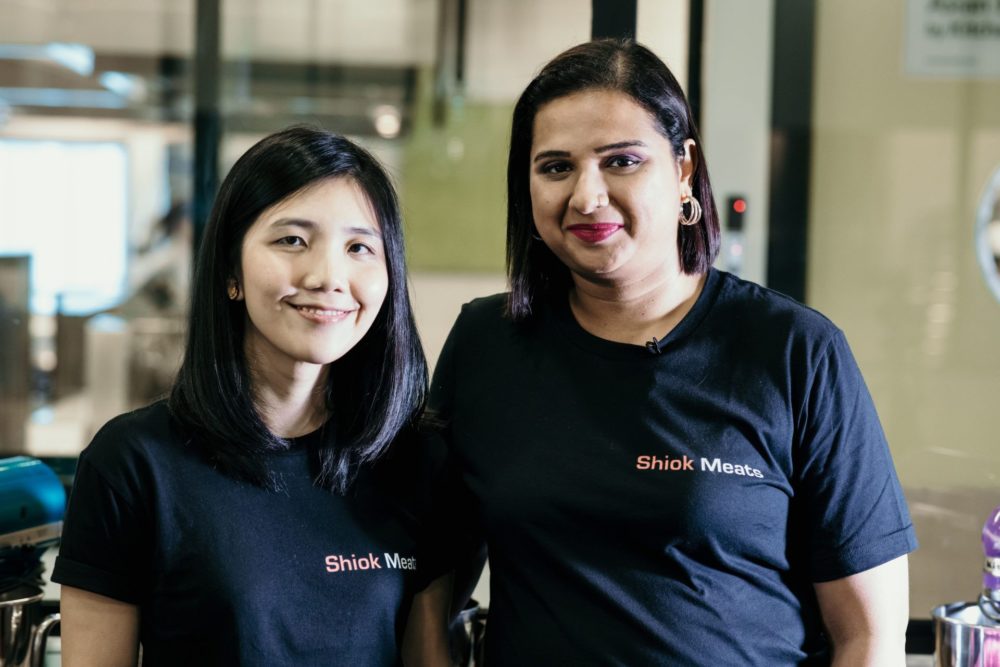
Take Singapore food tech darling Shiok Meats, for instance. When the company showcased its first prototype in 2019—the world’s first cell-based siew mai—it was quickly shoved into the media spotlight, heralded as one of the up and coming food tech startups in both Singapore and Southeast Asia.
The company’s offerings were scheduled for commercial launch in 2023, but there was just one problem: the five shrimp dumplings it showcased had a whopping S$8,000 to S$10,000 price tag on them.
Shiok Meats eventually did manage to lower costs by swapping some of the pharmaceutical-grade ingredients used in the production of their cultivated shrimp (which accounted for 90 per cent of its price) for plant-based and edible ingredients two years later, but even then, its products still remained relatively expensive.
A kilogram of lab-grown shrimp meat now set the company back by S$5,000, bringing down the cost of each siew mai to S$150, and the company’s co-founder, Sandhya Sriram, was so sure that this could be further reduced to a “two- to three-digit number” by the start of 2021.
But that never happened. In 2023, Sandhya came out to share on LinkedIn that Shiok Meats was “unable to scale its crustacean stem cells into production” after facing allegations that its core technology did not work and losing half its staff six months prior.
Production pauses, contaminated cell lines, and failed experiments
Shiok Meats’ struggle to scale isn’t an isolated incident; it’s a reflection of broader industry-wide shortcomings.
Earlier this month, The Straits Times (ST) reported that the production of Eat Just’s cell-based meat, sold under the label Good Meat, had been put on pause. Its S$61 million Good Meat production facility in Bedok, which was initially slated to open in the third quarter of 2023, also appeared to be shuttered.
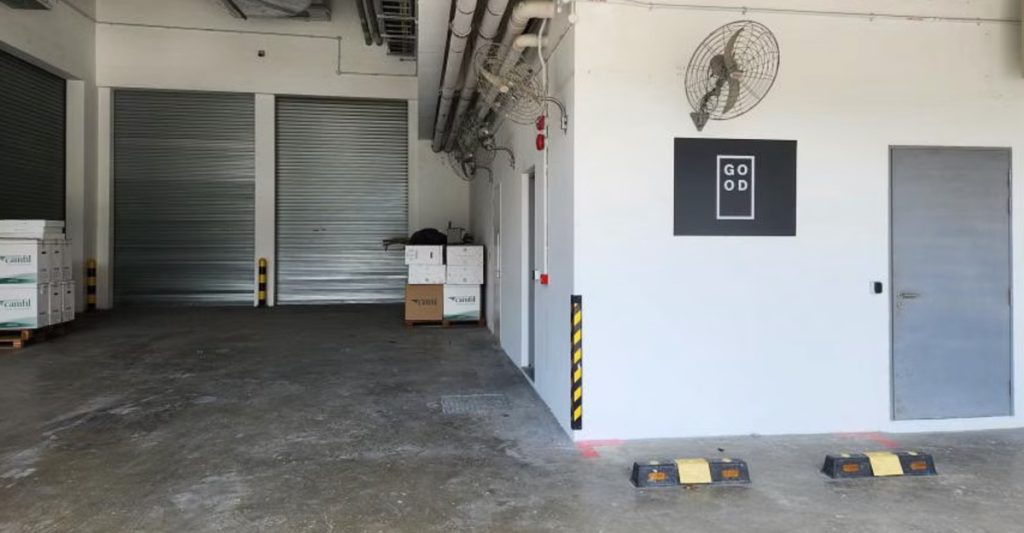
When Vulcan Post reached out to Eat Just regarding the pause in production, an Eat Just spokeswoman was quick to clarify that the company’s production in Singapore “had never been continuous”.
Eat Just’s production has always been more campaign style—our regular cadence since we began production in 2020 has been to produce and pause, produce and pause. There’s truly no news here; we are simply in a paused phase of production as we have been in the past, and we plan to resume production and service to consumers very soon.
– An Eat Just spokeswoman on the company’s reported pause in production
Even if that may be true, the lab grown meat company has had a history of encountering setbacks in its cultivated meat experiments.
Sometime in 2018, when Eat Just was exploring cell-based duck products like foie gras and duck chorizo, scientists ran a scan on the cells being used and found mouse cells, forcing Eat Just to scrap its duck products altogether.

Temasek-backed Upside Foods also found similar contaminants—rat cells, to be precise—in their cell lines back in 2019.
The company has made progress since the incident, opening a production factory to scale its offerings, but an article by MIT Technology Review in 2023 alleged that Upside Foods was still producing its textured chicken product by growing thin layers of chicken skin cells in laboratory flasks, which are then manually pressed into chicken pieces—versus growing the chicken breast products in their bioreactors.
Is cultivated meat truly environmentally friendly?
Looking at the state of the industry, it’s painfully obvious that the technology isn’t at all there yet—it just seems more like a story about optimism. What should’ve been left in academia has now seemingly turned into a waste of time and resources.
Yet, many of these companies still chase the idea that these cell-based meats are viable and ethical alternatives to slaughtering animals.
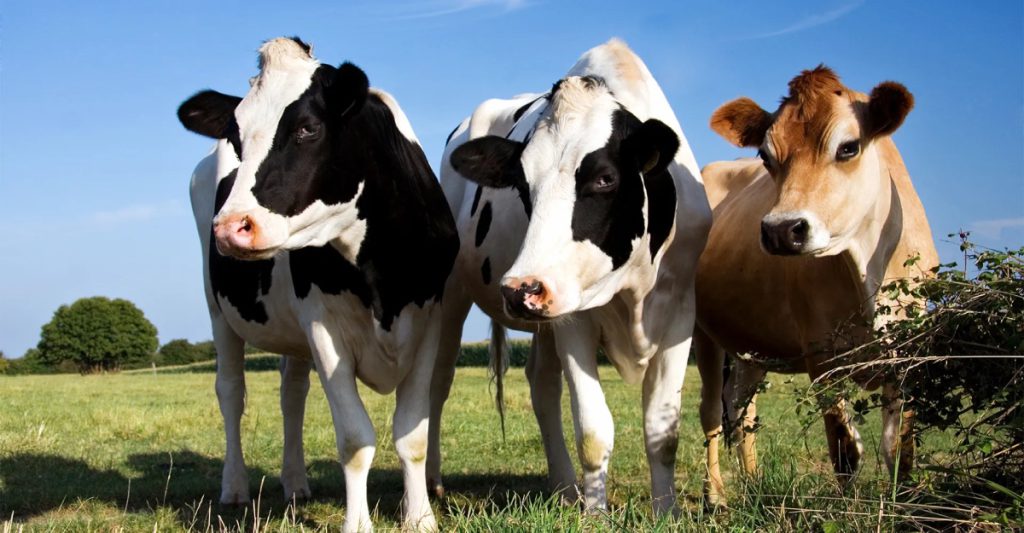
Beyond the ethical allure of lab-grown meat, it is often hailed as a sustainable alternative to raising livestock. Feeding animals on farms requires a lot of land and energy, both of which can produce carbon dioxide emissions. On a global average, one kilogram of beef can account for emissions roughly equivalent to 100 kilograms of carbon dioxide.
Cultivated meat could potentially eliminate these environmental challenges as it requires less land, water and greenhouse gases. But according to researchers at the University of California, whether or not cultivated meat can deliver on its big climate promises still remains questionable.
In fact, they found the environmental impact of lab-grown meat to be “orders of magnitude” higher than retail beef based on current and near-term production methods.
This is because energy is required to run the reactors that house cultivated cells as they grow, which will likely involve the use of fossil fuels.
Sure, they could be replaced with renewables once they become widely available, but even then, the reactors, pipes, and other necessary equipment for production facilities often have associated emissions that are tough to eliminate entirely. In addition, animal cells need to be fed and cared for, and the supply chain involved in that also comes with emissions attached.
Cultivated meat production can benefit Singapore’s economy
But be that as it may, Singapore still stands to reap significant economic benefits from lab-grown meat.
Given the nation’s land scarcity, cultivated meat could play a pivotal role in reducing the reliance on imported meat and address supply chain vulnerabilities. Presently, Singapore imports more than 90 per cent of its food from more than 180 countries and regions.
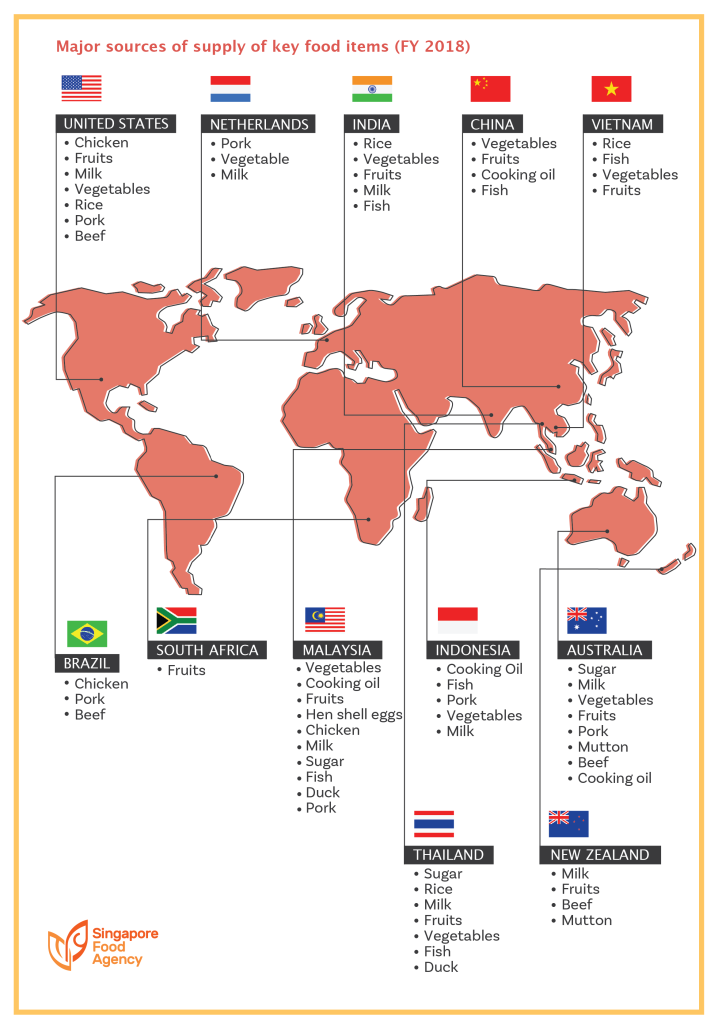
Although the government is working towards ramping up local food production to meet 30 per cent of the nation’s nutritional needs by 2030—up from less than 10 per cent currently—it falls short, especially when you consider that global demand for food is projected to increase by 50 per cent come 2050 with population growth.
Apart from this, with countries increasingly looking inwards and prioritising their needs over international trade following COVID-19, inflation and international security threats, deglobalisation poses additional challenges to Singapore’s food security, making investments in cultivated meat production even more strategically significant for the city-state’s economic resilience.
But these investments may never gain fruition, considering the current state of the industry.
Featured Image Credit: Lehigh University
Also Read: Shiok Meats CEO on how it went from rising foodtech startup to losing half its team in 6 months
Forget the big coffee chains, here are 5 brands championing innovation in S’pore
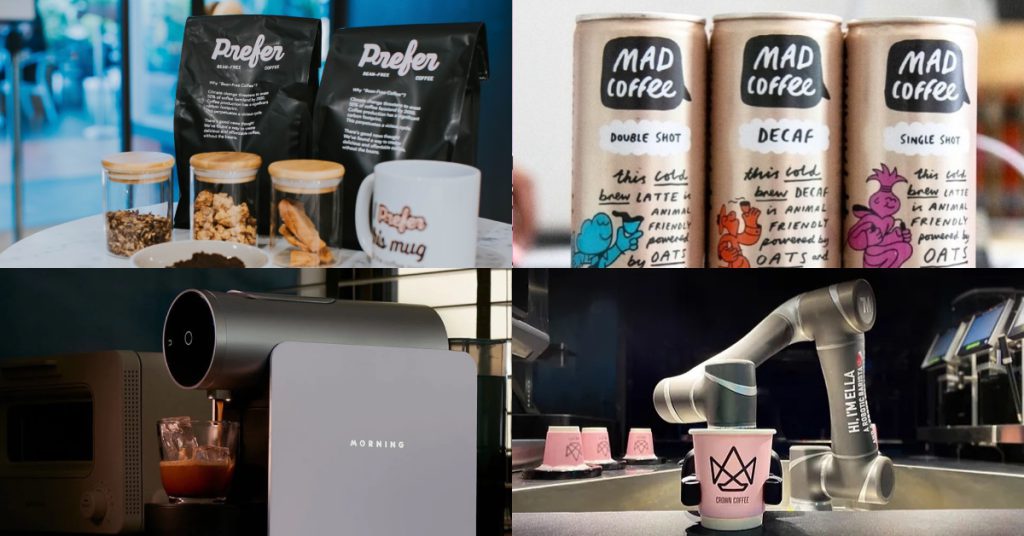
In 2023 alone, many international coffee chains made their debut in Singapore, notably Indonesia’s Kenangan Coffee, Canada’s Tim Hortons and China’s Luckin Coffee, spurring the coffee craze in the city-state further.
As the industry becomes increasingly competitive and saturated, smaller coffee startups and chains need to be innovative with their product offerings to ensure long-term business sustainability.
With that, here are five homegrown coffee brands that are making waves with their one-of-a-kind coffee products.
1. Prefer
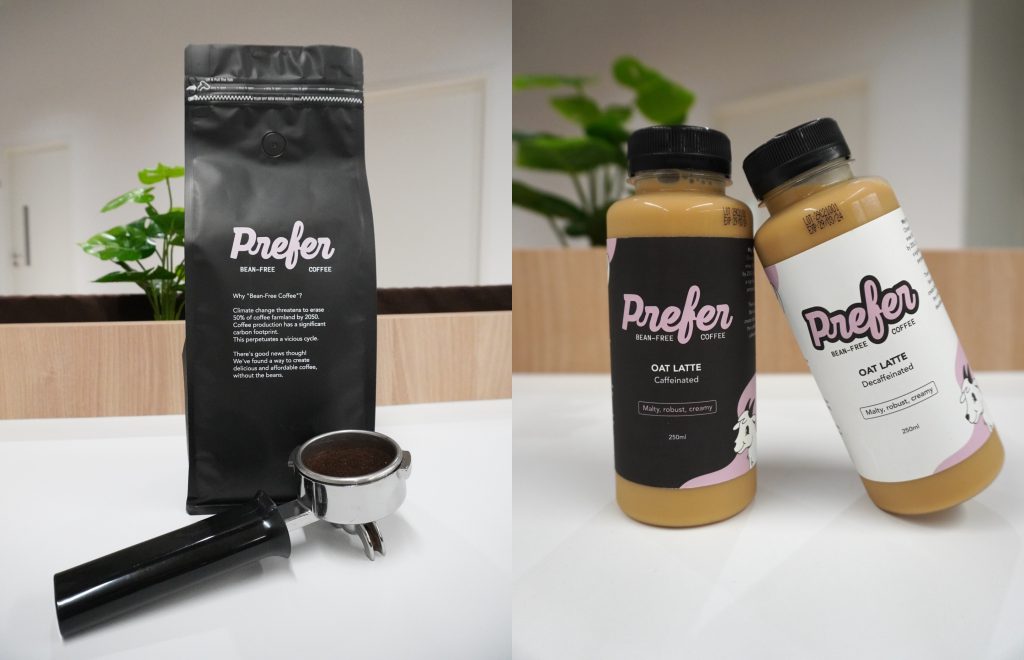
If you thought coffee could only be made with coffee beans, Singapore foodtech startup Prefer will prove you wrong.
Founded in 2022 by Jake Berber and Ding Jie Tan, Prefer aims to disrupt the coffee market by offering a new substitute: its “bean-free” coffee, which is created by fermenting excess bread, soy pulp and spent grain.
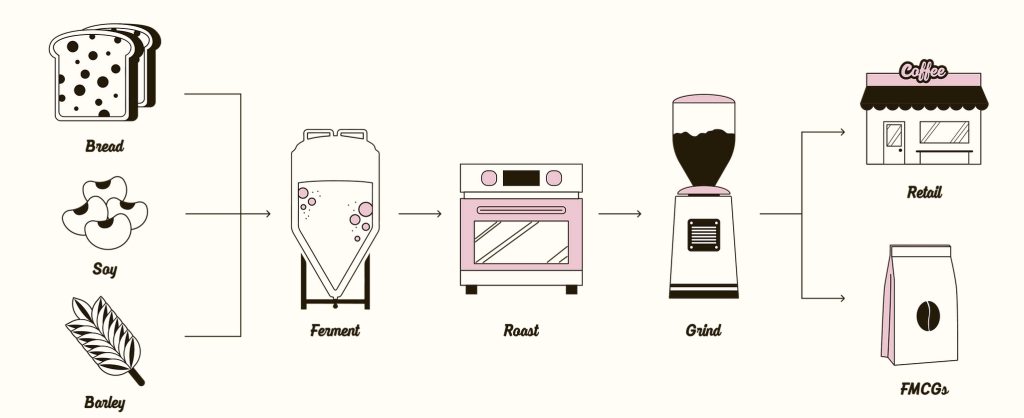
Jake Berber, co-founder and CEO of Prefer, explained that the demand and price of coffee are expected to increase exponentially over the years. However, by 2050, about 50 per cent of the land used to grow coffee will be unable to.
By leveraging food fermentation, he believes that Prefer can provide an affordable alternative to coffee that does not exacerbate climate change and food waste issues.
“We believe Prefer is the next generation of the commodity we know as coffee today,” shared Jake.
Unlike harvesting fresh coffee beans from plantations, which can take months to grow depending on the season, Ding Jie Tan, co-founder and CTO of Prefer, shared that their coffee grounds can be created within 48 hours with their fermentation technology.
Ding Jie added that Prefer’s coffee grounds are compatible with standard coffee machines. The company has since partnered with various F&B establishments, including Foreword Coffee Roasters and SaladStop!, that want to diversify their offerings for their customers.
The startup raised US$2 million in seed funding last month and plans to use the funds to expand its production facility and market reach in Southeast Asia.
2. Crown Digital
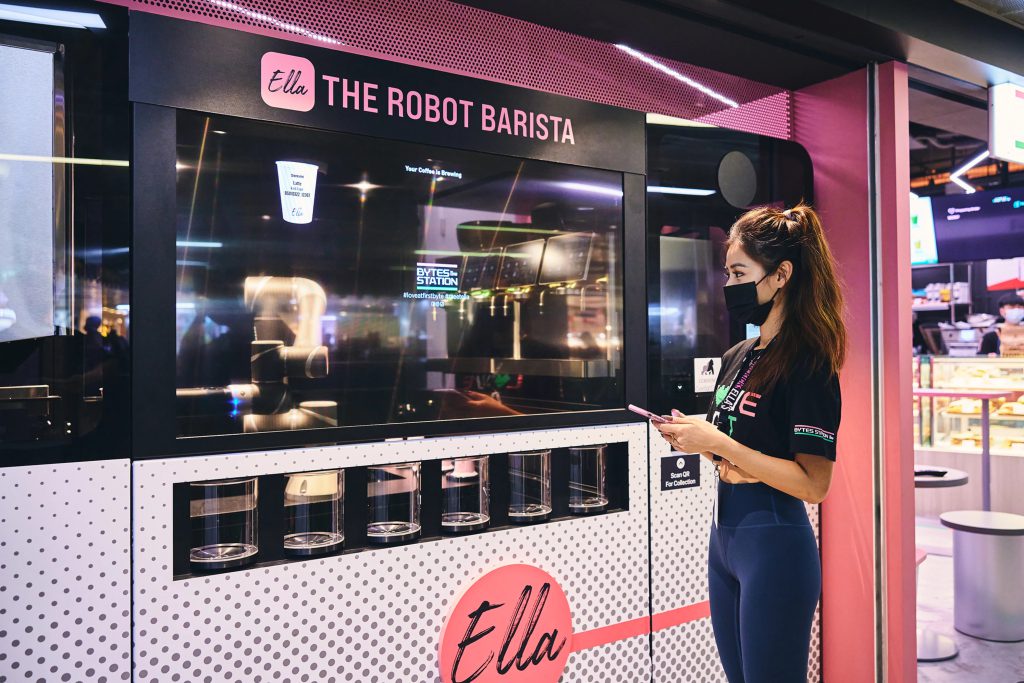
Two major ongoing issues faced by the Singapore F&B industry, especially the cafe scene, are high employee turnover rates and operating costs.
Coupled with the change in dining behaviours caused by the advent of technology and delivery apps, many establishments—including Crown Digital — have turned to automation to address these issues, hoping to increase their profit margins.
Crown Digital is an Internet of Things (IoT) startup and the brainchild of Singapore’s first robot barista, Ella.
Keith Tan, the founder of Crown Digital, shared that Ella is powered by Artificial Intelligence (AI) and robotics to independently brew 200 cups of coffee per hour, which is about four times faster than a human barista.
In 2021, Ella made her first international appearance in Japan, serving coffee to busy commuters in Tokyo and Yokohama train stations until February 2022. The startup then launched another kiosk at Raffles Place station soon after.
Customers can order coffee through the one-stop mobile app and scan their unique QR code, which leads to a “pigeonhole” where they can collect their drinks. As of now, there are seven Ella machines in Singapore, notably at Changi Airport.
3. NO HARM DONE
We often get our kopi—the Malay word for coffee—fix at our local kopitiams or coffee shops. But Simon Lieberum, the German founder of NO HARM DONE, aims to revolutionise our kopi drinking experience with their local-flavoured coffee capsules.
Coffee capsules were first popular in Western countries and then expanded into the Asia-Pacific region, where they have become the fastest-growing market. However, most are packaged in unsustainable materials, leading to a potential extreme rise in global pod waste.
On a mission to provide Asian consumers with a sustainable Asian alternative to Western coffee for their capsule machines, NO HARM DONE was launched in 2018 with a bootstrapped capital of S$1,000.
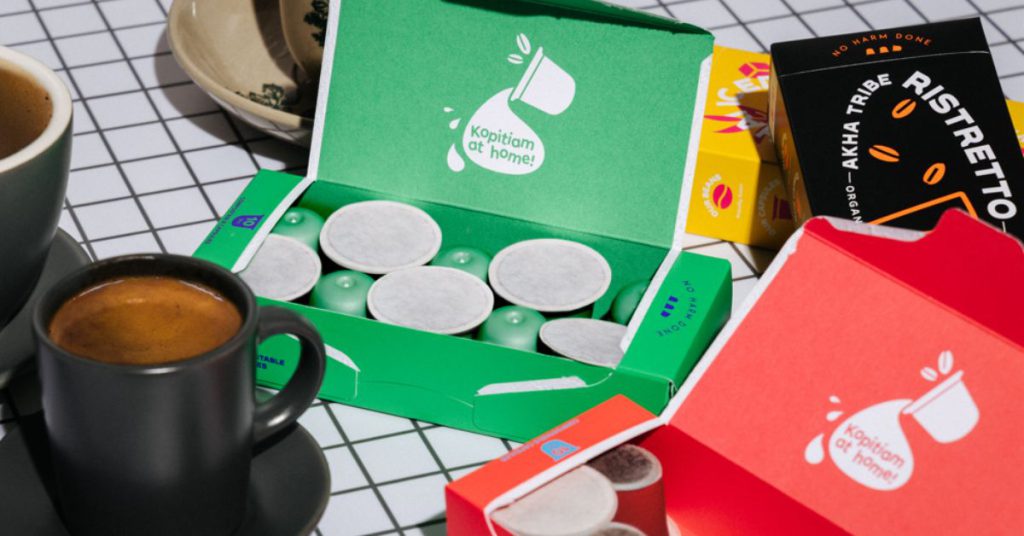
Simon shared that all ingredients used are sourced from Asia, and their capsules are produced in Singapore. “There is no need for us to ship coffees around the globe when we have great Asian coffees with minimal environmental footprint,” he added.
NO HARM DONE’s coffee capsules are made with compostable pods and recycled boxes—an idea that was conceptualised after consulting with environmental consultants and industry experts.
The capsules are sold based on a subscription model in limited amounts to prevent wastage, with each pod costing as low as 54 cents. Their products are also sold in supermarkets and e-commerce sites, including Shoppee and Lazada.
4. Morning
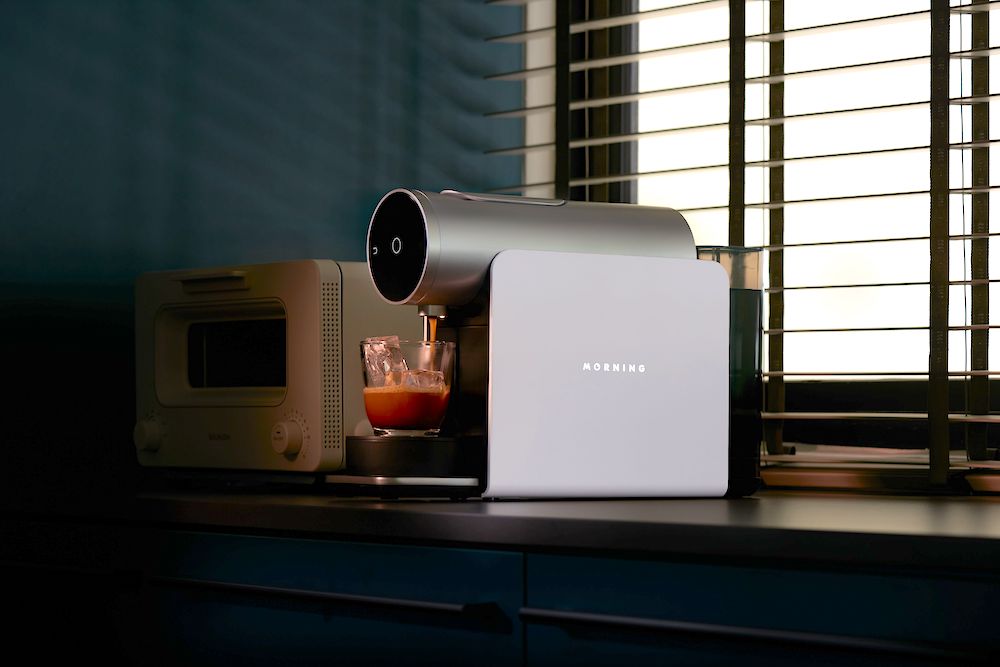
Another startup with innovative coffee products is Morning, which created a coffee tech ecosystem for businesses and consumers.
Simply put, Morning provides a marketplace of the world’s best speciality coffee capsules and launched its coffee machine, Morning Machine, which has precision-brewing features.

Leon Foo, the co-founder of Morning, shared that the team borrowed product features from professional coffee equipment to widen the machine’s brewing parameters leveraging IoT, from temperature precision to pressure profiling.
The brand has announced that it will open its first brick-and-mortar store in May 2024 as one of the tenants in hospitality company Lo & Behold Group’s new lifestyle complex, New Bahru.
5. MAD coffee
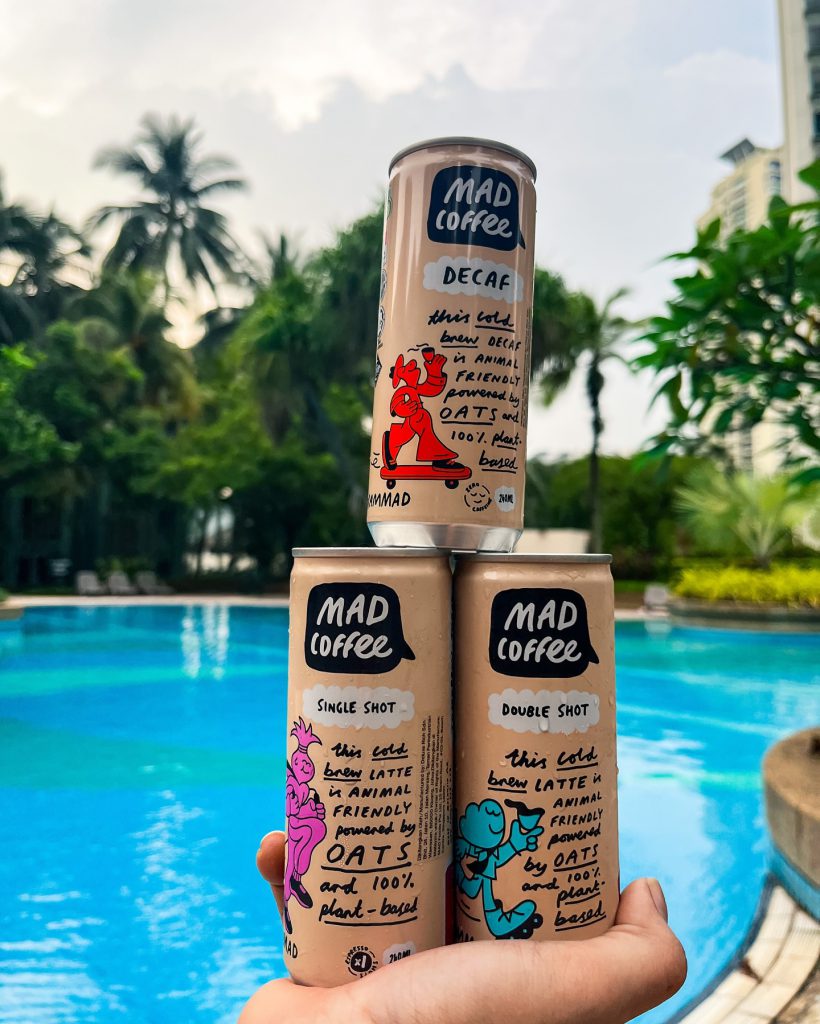
As convenience has become a selling point, many coffee chains have introduced ready-to-drink (RTD) coffee products, creating another saturated market within the industry.
Singapore foodtech startup MAD Foods decided to create its take on the RTD cold brew trend by offering a 100 per cent plant-based and dairy-free canned coffee called MAD Coffee in 2019.
Unlike many RTD coffees that contain whole milk, MAD’s coffee is entirely made with oat milk sourced from Europe across all three variations: Decaf, Single Shot, and Double Shot. Their coffee cans are also made with BPA and plastic-free aluminium, keeping in line with their image as a sustainable brand.
The startup entered an exclusive partnership with 7-Eleven for its launch in Malaysia last year. Its products are currently sold in online and offline supermarkets, such as Cold Storage and GrabMart in Singapore.
ANEXT Bank, a Singapore-based digital bank regulated by MAS, empowers startups with easy and accessible financing to fuel their business growth and expansion.
Featured Image Credits: Prefer, MAD Coffee, Morning, Crown Digital
Also Read: They quit their corporate jobs to offer S’poreans a newer way to enjoy coffee—concentrates
With a quirky interior & fusion food, this café offers diners in Kelantan something different
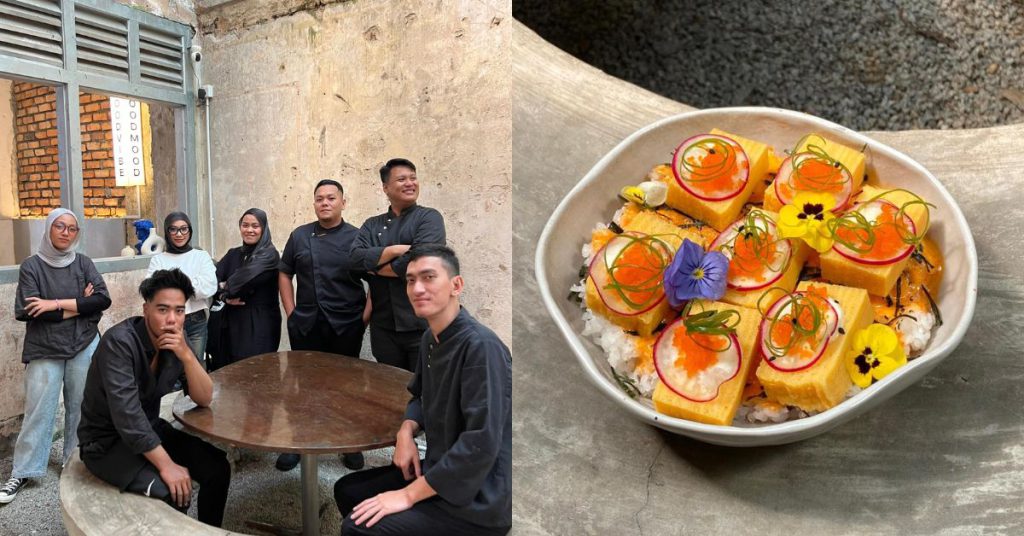
On my way to Siti Khadijah Market in Kota Bharu earlier this year, an interesting-looking cafe on the roadside caught my eye.
Named To The Moon, it looked reminiscent of a spot you’d find in Penang or KL. While cafe culture in Kelantan has been growing over the years, it’s still rare to find “aesthetic” or “Instagrammable” locations in the area.
Although I wasn’t able to dine there at the time, it piqued my interest enough that I reached out to learn more.
I managed to get in touch with CK, the Kelantanese founder of To The Moon.
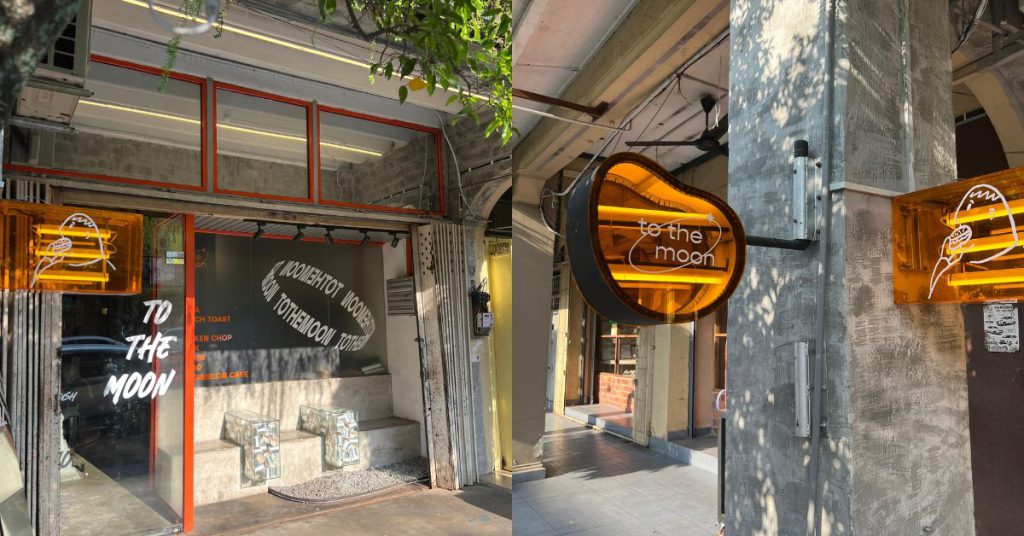
Graduating from Taylor’s with a degree in business administration, CK had previously jumped on the bubble tea trend and even took on a bubble tea franchise.
However, he ended up having to close down the business due to a lack of demand and high rental in Kelantan.
“Actually business was great for the first four months, and then boom—MCO for almost two years,” he explained.
But it was also the pandemic that allowed him to cook up something new.
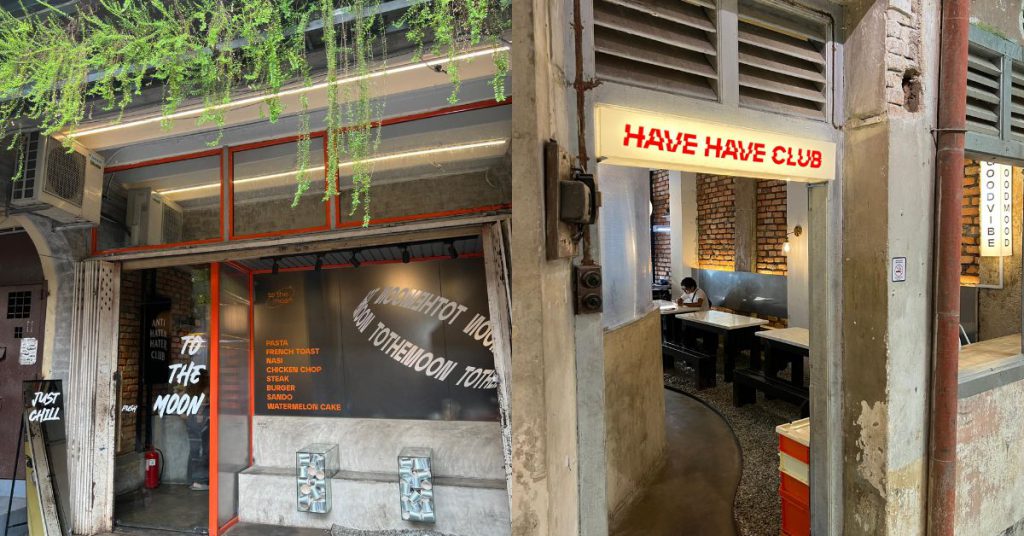
With people stuck at home, CK knew that once restrictions were lifted, people would definitely want to go out and dine with friends and family. Thus, he knew it was an opportune time to get into the market.
“Somehow, deep down my heart, I always thought why there wasn’t a modern restaurant/cafe in heritage buildings like in Penang, Ipoh, or KL,” he said. “People of Kelantan deserve one.”
For those who are into crypto, you might understand the reference made by the cafe’s name. Essentially, To The Moon is a popular saying in the crypto community, referring to a crypto witnessing a major upward market trend.
Finding the saying trendy, catchy, easy to pronounce, and somehow romantic, CK made his pick and launched To The Moon in 2021.
Cooking up fusion food
At To The Moon, the cuisine is a mix of different things, from Japanese fare to Western flavours, while incorporating Thai and Malay dishes too. CK shared that the reason for going the fusion route is because he felt like just regular Western cafe food would be too boring.
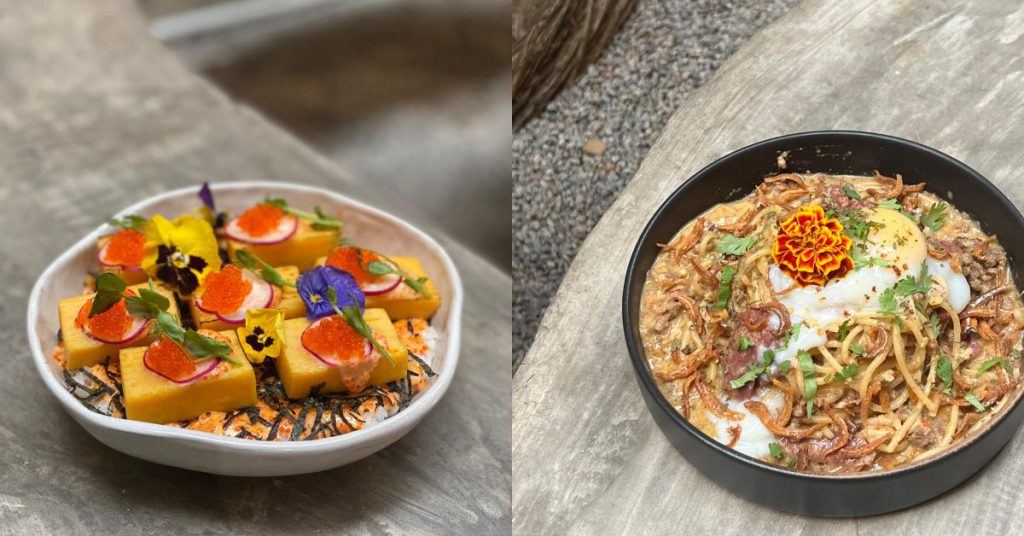
But CK doesn’t think that they jump on trends just for the sake of it. Rather, the team puts thought into whether people will or not like the food, and whether the dish will stand the test of time.
Take for example their panna cotta, which he felt was perfect as it’s not just cute but is also delicious.
Currently, To the Moon comprises a nine-person team. The chefs are all local to KB, and many have worked at famous hotels and restaurants in KL, CK shared.
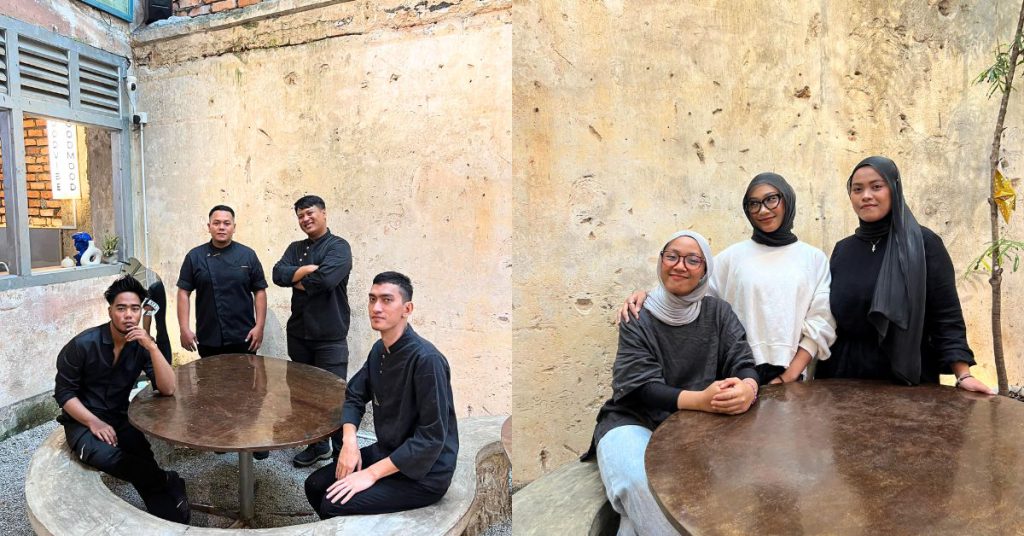
A quirky interior
Something notable about the cafe is its quirky interior design that blends nostalgic, traditional elements with an industrial and modern vibe. There are plenty of mirrors around too, for that perfect OOTD shot.
And you won’t want to miss the jokes hidden about. There’s a trash can labelled “Ex Aku” (my ex), next to stairs that read “Jatuh Cinta Bukan Tangga” (fall in love, not off the stairs).
CK proudly shared that he designed the space himself alongside his contractor, and did not hire any interior designers.
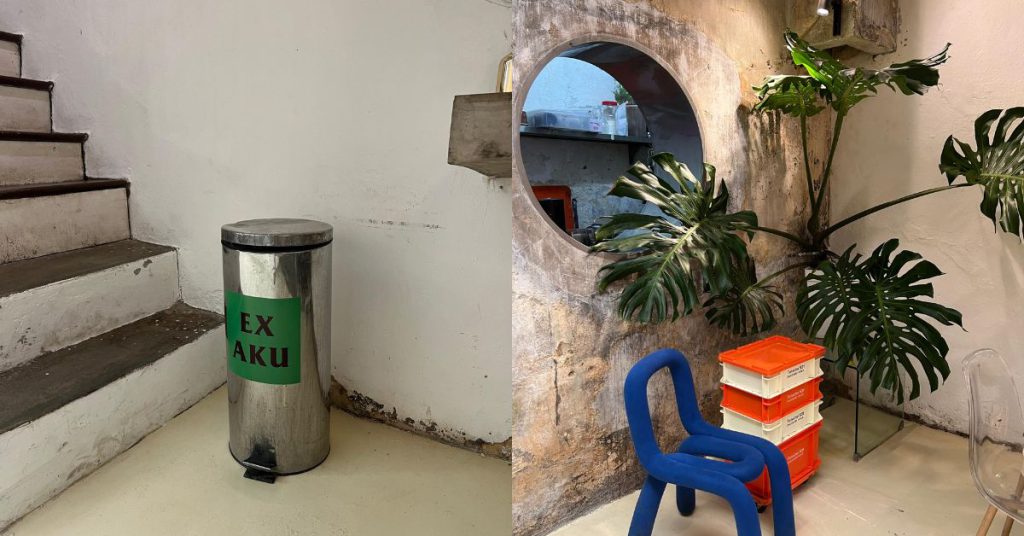
“To be honest, I think of myself as quite a creative person,” he said. “Plus, I had so much time during MCO to think about the design. I would sit at the shop for one or two hours just to brainstorm and imagine what it would look like.”
Explaining the humorous parts of his design, he said, “Life is too short, why not just laugh? I always want to see people laugh, and so I always think of funny ideas and put in in the cafe and our social media.”
True to this mindset, they’ve had a few viral videos, with one gaining over 2 million views on Instagram. CK said that this strategy has been critical in boosting their business.
A growing cafe scene
Although cafe culture in Kota Bharu has been growing over the years, CK believes To The Moon’s concept is new to the state.
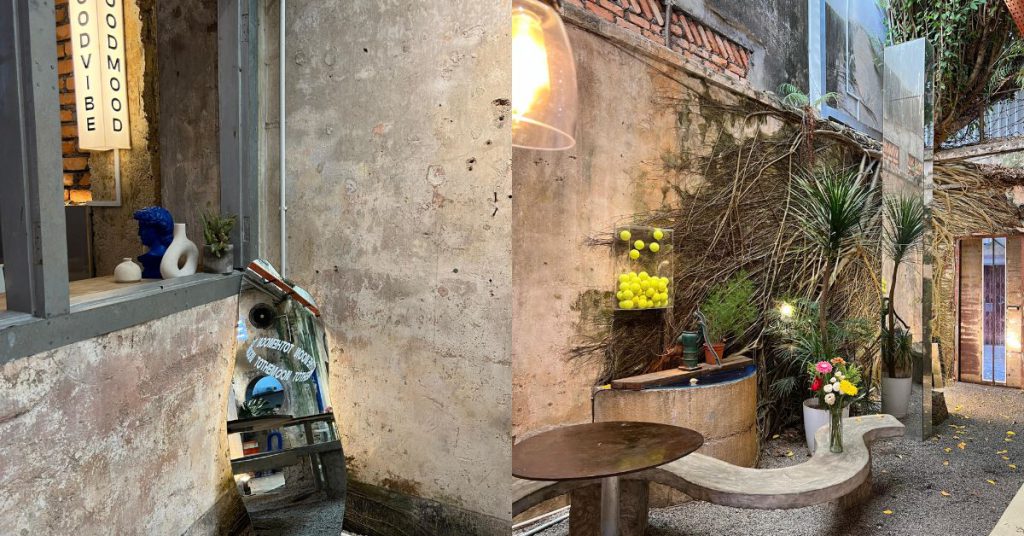
“First, it is in a heritage building—as mentioned, I wanted something of a mixture between modern and heritage,” he said. “Plus there is already a cafe call Kedai Kopi Lama located on the same row, and their business is quite well.”
On top of that, the location is by the main road, so drivers and passengers will notice them as they’re close to the traffic light too.
And he would be correct, because that’s exactly how I first came across his business.
Going forward, CK foresees the cafe market to become more competitive. To maintain their position, he believes the best thing is to just continue improving To The Moon’s food, customer services, and creativity.
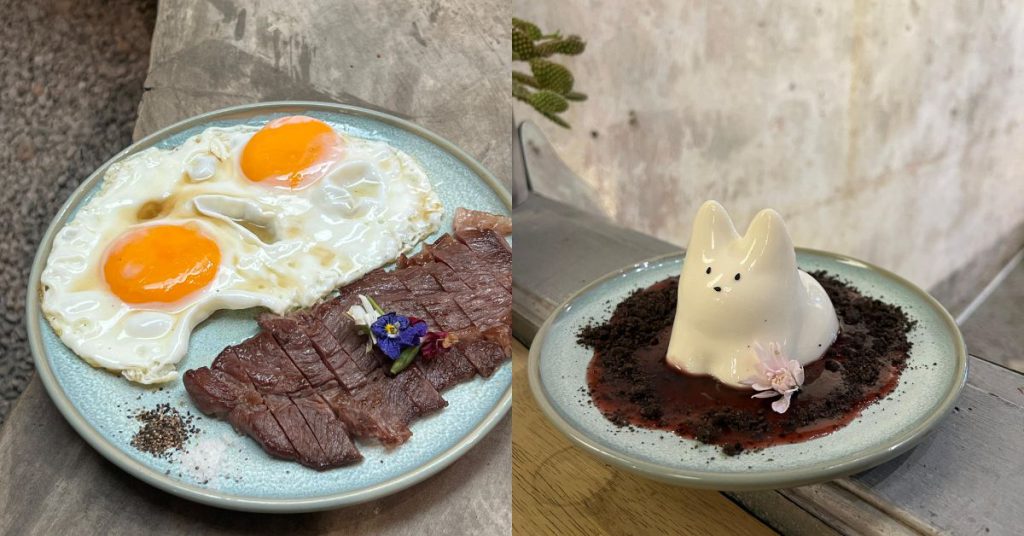
“Only the creative ones will live when it’s getting more competitive,” he quipped.
It is through creativity that CK believes To The Moon can now be considered “well known” in the state. But now, the next step is to attract audiences from other states.
But for now, CK’s sights are set on something nearer. The founder revealed that the team is renovating the second floor of their cafe in order to turn it into a bakery serving pastries and cakes.
This will be the first step in CK’s ambitions to expand To The Moon to not just other states but even other countries, fulfilling his dream to serve up Malaysian fusion food worldwide.
Also Read: Employees need a Copilot to boost productivity & ease brain drain. This webinar shows how.
Featured Image Credit: To The Moon
How a health scare led this S’porean to make jewellery that helps people cope with death
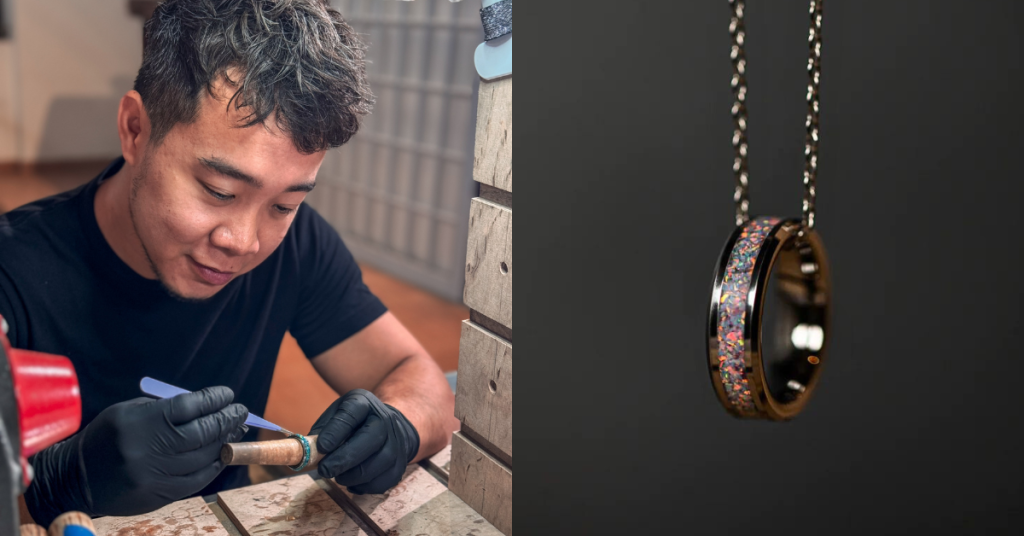
When celebrating your birthday, the last thing you’d expect is for a family disaster to happen. But that’s exactly what happened to Andrew Lim when he hit the big 3-0.
After returning with his friends from an escape room game, he found close to 30 missed calls and text messages from his mum and sisters. Something had happened to his dad, something was wrong with his heart.
As he rushed to the hospital, there was only one recurring thought in his head—”What if I were to lose my dad today?”
Thankfully, Andrew hasn’t had to worry about that yet. His dad’s doing just fine following a few medical procedures.
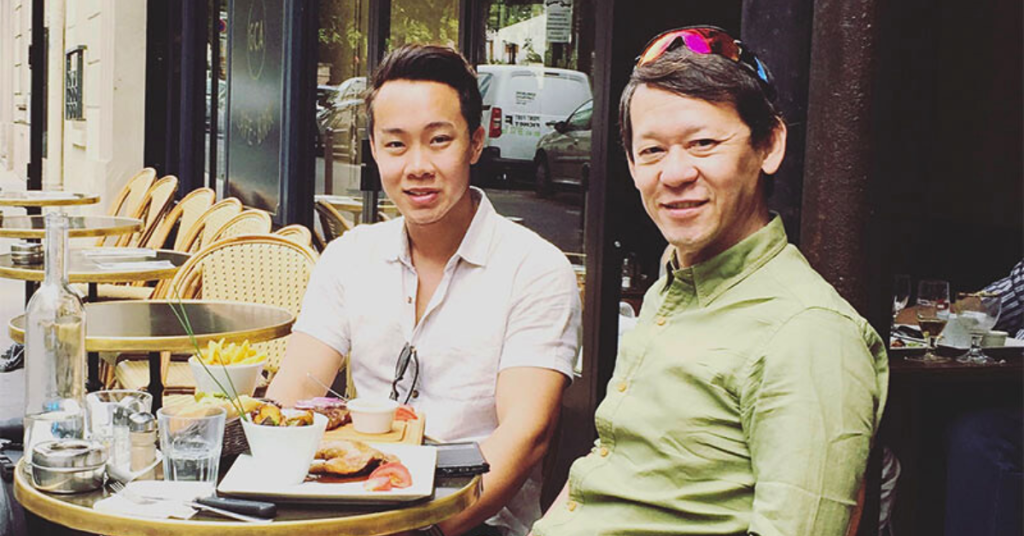
However, the question still persists. Nobody lives forever and he will eventually go someday, so then what?
This drove Andrew down a rabbit hole. He started researching options for keepsake jewelleries, a way to always have a part of his dad by his side wherever he goes. Particularly during times when he’d travel to scuba dive overseas.
Nothing he found was satisfying. The designs were limited mostly to women and had a commercial feel to them. None of them seemed to provide any assurance that the ashes passed to them have gone into the jewellery.
That left him with no choice but to start Apart.sg to rectify the situation.
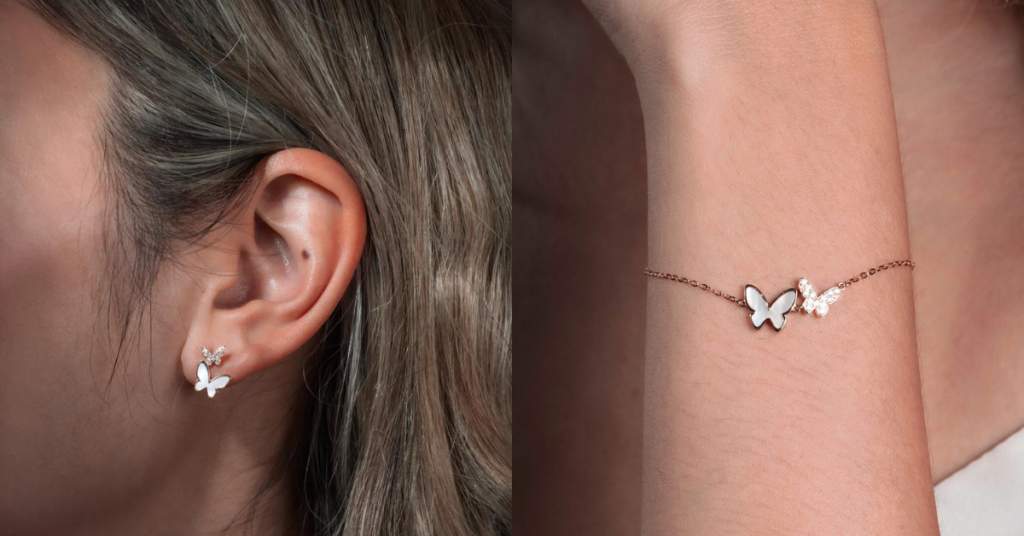
A beautiful coping mechanism
A one-man show, Apart.sg began as a personal project to help others cope with grief. Andrew himself was invested in the idea and figured there were surely others looking for such a service.
With no prior knowledge or silversmithing skills, he took some time out of his photography career to research the craft. The more he learnt about it, the more he fell in love with creating jewellery.
Months were spent on R&D to ensure he had the necessary expertise to run the business, including seeking help from industry professionals. To practise, he used chicken bones to work on the jewellery design concept since there weren’t any ashes to spare.
For context, keepsake jewelleries are memorabilia accessories designed to hold a small item of sentimental value. This could be a lock of hair or fur, a piece of fabric, or more commonly, cremated ashes.
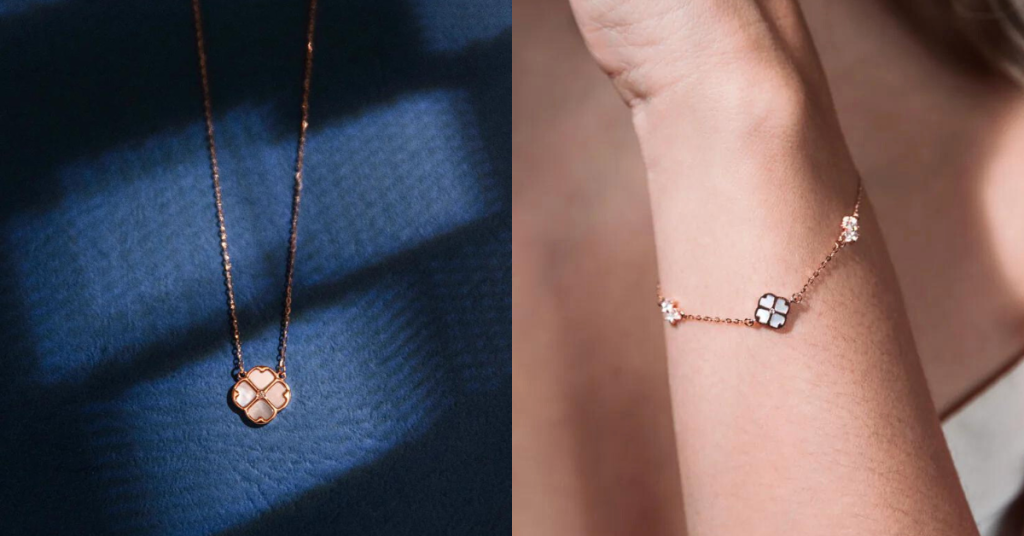
Andrew’s brand currently offers an array of keepsake jewelleries such as rings, necklaces, and bracelets. If you’re looking for a custom design, that can be arranged as well. Do note that this can be quite costly depending on the design and materials required.
Most of them are made with S925 sterling silver, though they also have rose gold jewellery as well. Many of the clients he’s worked with mentioned wanting these jewellery pieces to become family heirlooms.
As such, their material of choice is 18K rose gold as they’re more resistant against tarnish and therefore more durable. Apart.sg’s catalogue at the time of writing starts from SG$189.
Andrew employs several different methods to create his designs. For example, Apart.sg’s rings have a groove in the middle where he will layer ashes then top them with crushed opals for some sparkle.
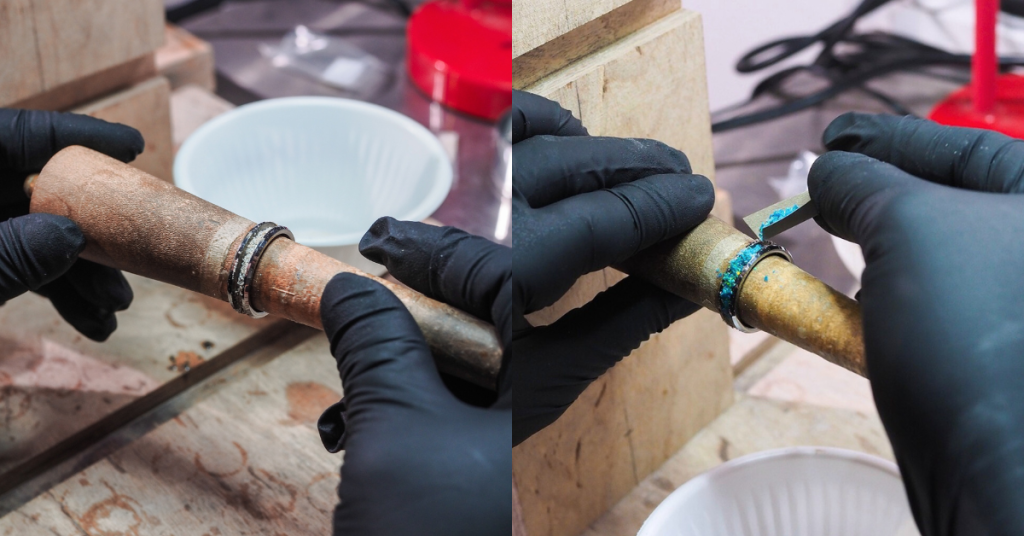
As for the others, there would generally be a slot in the middle of the jewellery pieces to store the compact ashes. Then either opal, mother of pearl, or powdered pearl is blanketed on the top.
Making sure it’s personal
Regardless of the kind of jewellery chosen, Andrew has made it a point since day one to document the process. This gives clients peace of mind knowing that these keepsakes actually contain essences of their loved ones.
One way he does this is by scheduling a one-on-one consultation with each client at his home-cum-office. Doing this allows customers to see and wear the jewellery in person before placing an order.
Additionally, clients can see for themselves how the founder and jewellery-maker handles their sentimental items.
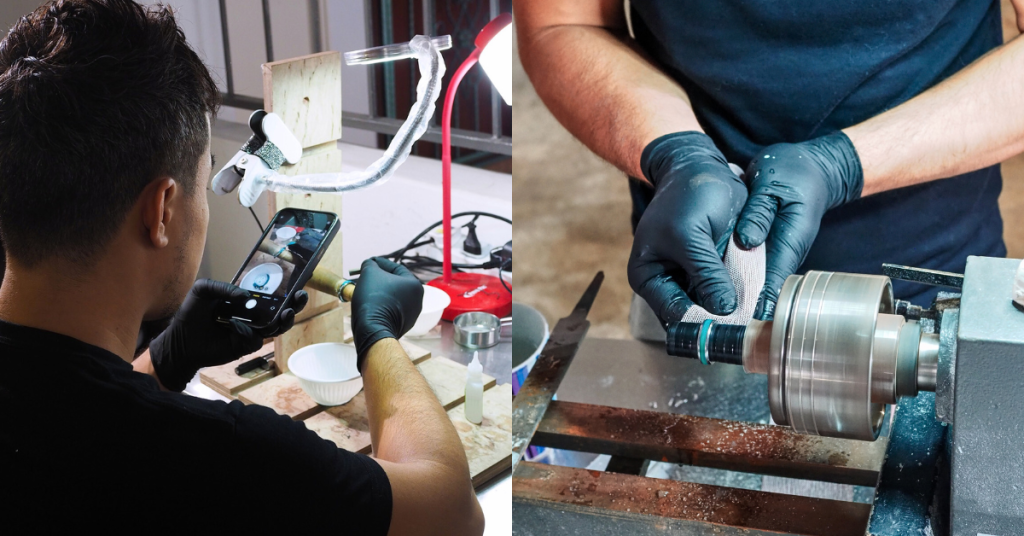
His usual practice is to label the jewellery that’s been tried on with an order number, and store it together with the items. The documentation process clearly shows the labels as well, so there won’t be any mix-ups or careless handling of the precious remains.
“I believe that pieces like these need a little personal touch,” Andrew shared. “Going the extra mile to meet all clients and invite them here (my home) goes a long way, especially during such sensitive times.”
It’s also for this reason that he’s not keen on receiving sentimental items through mail or shipping. He highly encourages clients to visit the store so that they go through fewer hands.
De-stigmatising the taboo of death

“Many of my clients don’t know what to do when their loved one has passed. If the logistics itself isn’t even known, what about the emotional aspect of things? How do we cope with loss?” he stated.
These keepsakes serve as a subtle remembrance of loved ones. Having a tangible item can evoke feelings of closeness and comfort, as well as be a source of solace during the mourning process.
It can also become a conversation starter for people to share fond stories and memories of the departed. Thus, fostering connections with others to help build a support system in this time of need.
This is essentially everything that the brand stands for: a means of providing comfort and a way to let the memories of loved ones live on.
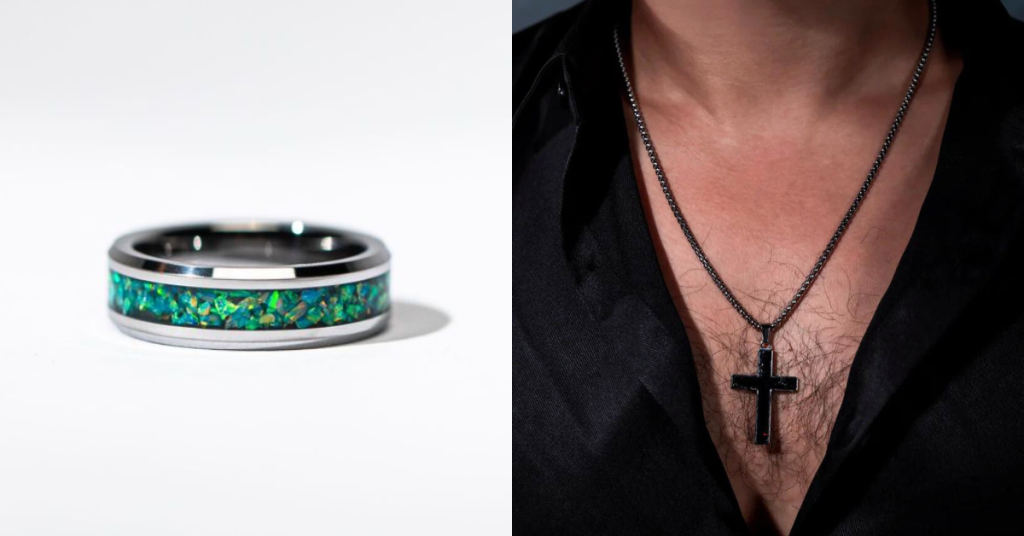
Looking at it through a wider lens, Andrew’s hope is that the jewellery he creates will encourage Singaporeans to discuss death more openly.
“It definitely isn’t enough [to de-stigmatise the taboo of death in Asian cultures], but it is a start,” he stated. Though small, his creations seem like a step in the right direction.
Also Read: The Tokyo govt wants to grow MY & SG startups in Japan, here’s how entrepreneurs can benefit
Featured Image Credit: Apart.sg
This Bornean team was invited to perform in Japan, now crowdfunding RM180K to make it happen
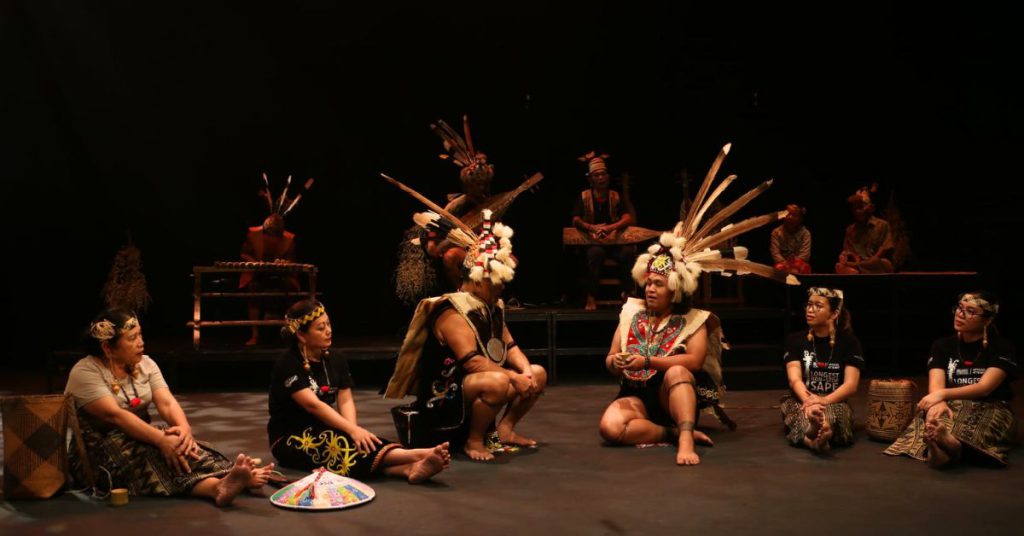
Last year, The Tuyang Initiative (Tuyang) was invited to perform at the World Music & Dance Festival in Hakodate, Hokkaido, set to be held in August 2024.
Tuyang, which we’ve previously featured, is a community-led arts management organisation devoted to preserving indigenous Bornean cultures.
Established in 2017, this wouldn’t be the first time the Tuyang team has received an invitation from this festival.
“The festival actually has been trying to get us over to Japan for a few years now, and it’s just that the opportunity hasn’t been right, especially during the COVID period,” Juvita, the co-founder of Tuyang, told us.
But when the opportunity arose again last year, they were finally ready. After all, the team has had more international exposure, having opened the Singapore Festival of Arts in collaboration with a Chinese orchestra.
A celebration of various cultures around the globe, World Music & Dance Festival in Japan welcomes about 30,000 people every year, making it a precious opportunity for any group to showcase their performances.
Plus, the festival also generously offered to take care of 15 Tuyang team members, covering their stay and food there in Hakodate.
However, there’s still an obstacle that stands between Tuyang and the festival—money for the flights.
Exhausting other options
Back in September, Juvita had reached out to the Sarawak state ministry and the state tourism board about the opportunity.
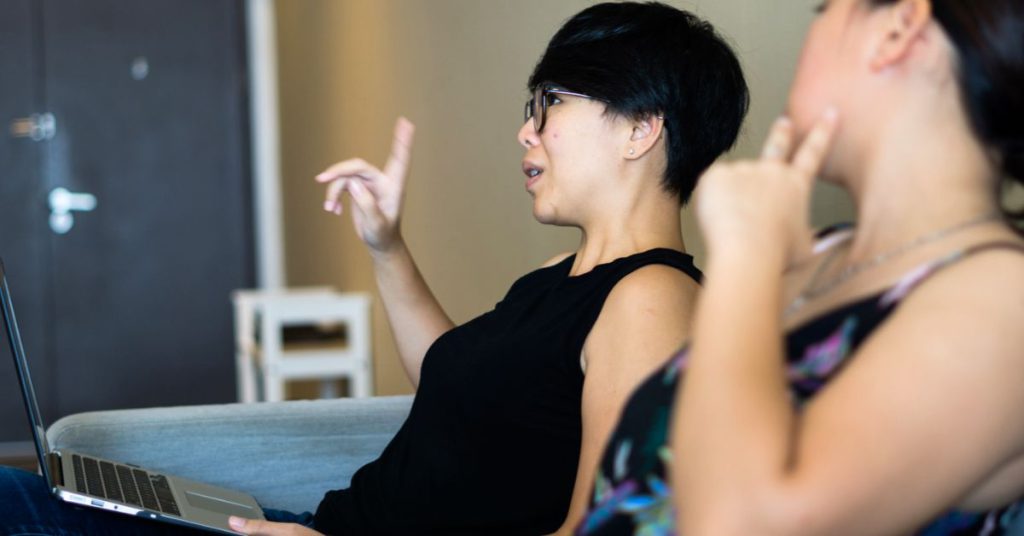
The co-founder believed that this festival was a great way to promote the state and share more about Sarawakian culture. With that, she felt like they would likely get the necessary resources.
Yet, the team wasn’t able to get any traction despite having their track record and portfolio of work.
In February, they finally heard back from a representative who said Tuyang needed to apply for a grant through an association.
As an accredited social enterprise, Tuyang is not linked to any associations and Juvita felt like as a player in the creative industry, it didn’t make sense for them to treat this like financial aid rather than a business opportunity.
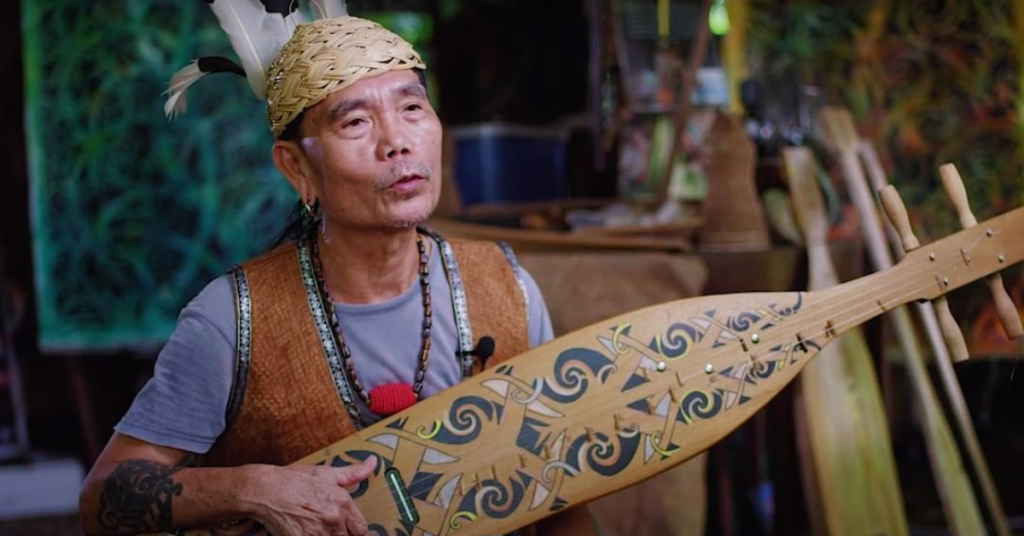
They wrote to airlines for sponsorships as well as MOTAC for a letter of endorsement, but was not able to hear back either.
Unable to get the necessary funding required to make it to Hakodate, Tuyang has turned to the masses. On March 19, they launched a crowdfunding campaign to raise RM180,000 by the end of March.
RM180,000 does seem like a big ask, but Juvita clarified with Vulcan Post that it is mainly to cover transporation fees, factoring some allowances for any incidences, layovers, and such.
Some practitioners will need to go from Ba’kelalan to Lawas (a six-hour drive), and then fly from Miri to KL, then to Tokyo, and finally to Hakodate.
Why it matters
The opportunity to perform on a stage of this magnitude is also the culmination of Tuyang’s work for the past seven to eight years.
“There are very rare chances for our cultural practitioners, especially if they’re rural-based, to try and elevate the way they present their own creative expressions,” Juvita said.
Juvita hopes that this chance will inspire the development of more work that can better contextualise Sarawak’s various indigenous group.
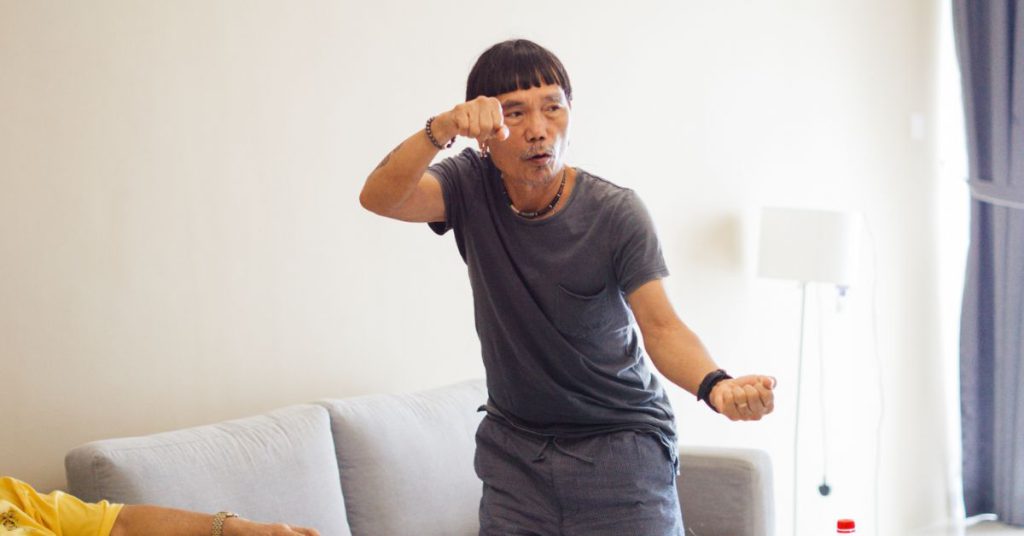
She pointed out that many tourism campaigns and fairs will jumble up various communities’ cultures into one broad stroke.
But Tuyang challenges this by bringing people who are actually from the land, who live and practise the culture, to go out and engage with others.
Yet, it’s challenging to counter mass media and tourism campaigns that paint a blanket stroke of indigenous Bornean cultures.
Through the performance they’ve prepared for the World Music & Dance Festival, Tuyang is showing a better, more nuanced way of combining indigenous communities’ cultures, exploring the common themes and shared motifs.
More than a performing arts company
Currently, the team is working to extend the festival’s deadline to confirm their spot so they can have more time to fundraise.
“If we get even RM100K to get our initial international flights sorted, I think that is the current baseline that we would be comfortable with,” Juvita said.
They’re also writing an appeal letter to the state ministry and the Dayak Culture Foundation.
From the fundraising platform’s side, there is an option to extend the campaign dates or keep the campaign running until the goal is met.
But if the timeline doesn’t work out, Tuyang will need to close the campaign and communicate with their donors about the situation.
At the time of writing, they’ve raised RM12,820.
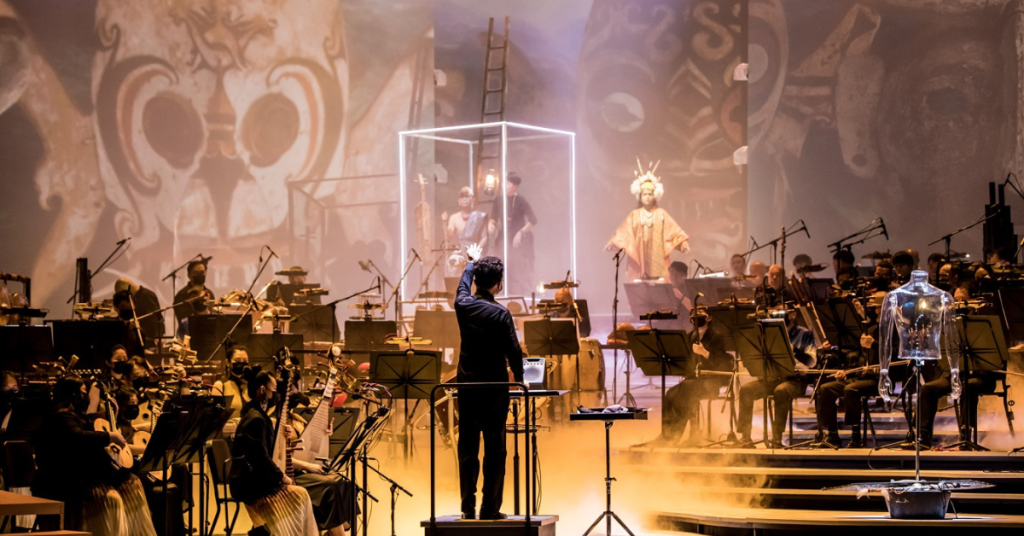
Juvita clarified that Tuyang is a social enterprise rather than a charity or non-profit. But getting the word out there about their business capacity is challenging.
As the co-founder pointed out, many see them as just a performing arts company, as opposed to a team who can offer solutions from a broader heritage perspective.
“We’ve been relatively successful in getting projects and commissions by clients,” she said. “We’ve worked with Education New Zealand and recently concluded an art curation project with an Oil & Gas company in Miri.”
One of their biggest dreams is to bring their performances to their own backyard.

This will do what Broadway has done to New York—offering recurring performances in a given timeframe, attracting people to the state to learn about its culture.
Stages like the World Music & Dance Festival will serve to solidify Tuyang’s capabilities, showcasing Sarawakian culture and heritage to the world.
- Learn more about The Tuyang Initiative here.
- Read other articles we’ve written about Malaysian startups here.
Also Read: Here’s how OCBC Business is making it easy for M’sian SMEs to offer cross-border QR payments
Featured Image Credit: The Tuyang Initiative